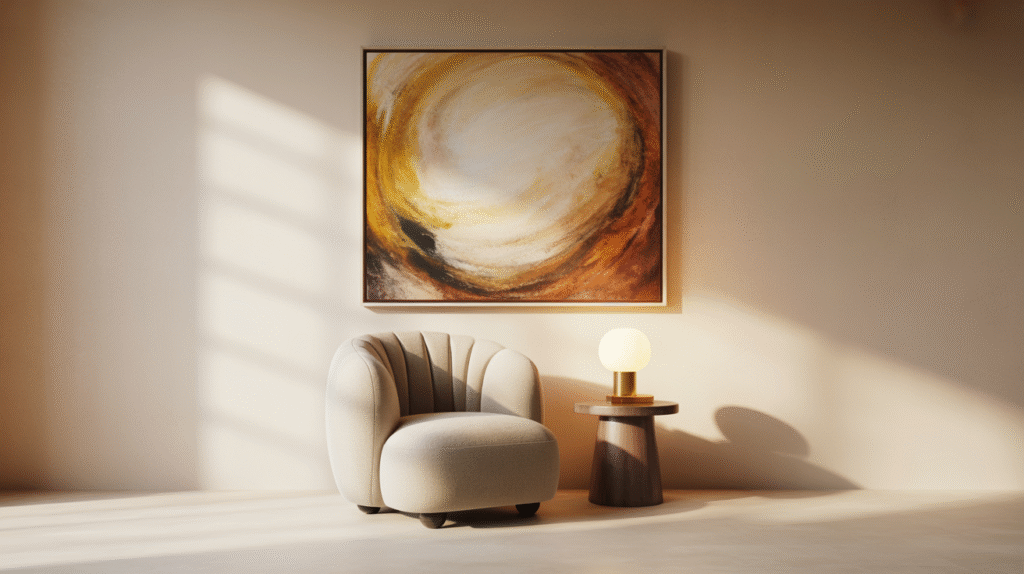Wall Art for Home Decor is not just décor—it is the heartbeat of a room. It anchors empty walls, tells stories of taste and heritage, and transforms any interior into a personalized sanctuary. While trends in design shift every few months, timeless wall art remains relevant, adapting gracefully across decades, styles, and even generations. This guide explores enduring themes, practical placement rules, and strategies to build a collection that will always feel current.
Wall Art for Home Decor in Everyday Spaces
In an age of disposable décor, a thoughtfully chosen piece of art provides continuity. It becomes a visual anchor around which furniture, lighting, and accessories can orbit. Unlike trendy items that fade in relevance, timeless wall art maintains harmony even as other elements of the home evolve.
A well-framed print or canvas does three things simultaneously:
- Defines mood — serenity, vibrancy, or sophistication.
- Bridges colors — connecting the palette of rugs, curtains, and upholstery.
- Establishes permanence — creating the sense that a space has history and depth.
Characteristics of Timeless Wall Art
1. Neutral or Classic Palettes
Soft earth tones, monochromes, muted greens, and balanced blues never lose their charm. Black and white photography, for example, adapts seamlessly from minimal apartments to country cottages.
2. Enduring Subjects
Botanical studies, seascapes, portraits, or Impressionist reproductions remain relevant because they speak to human universals—nature, memory, and beauty.
3. Elegant Simplicity
Pieces that avoid clutter but communicate through clear lines or textures are less vulnerable to short-lived fads.
4. Material Quality
Archival paper, museum-grade inks, solid frames, and UV-protective glazing all contribute to longevity both aesthetically and structurally.
Evergreen Styles That Never Fail
Black & White Photography
From architectural facades to candid street scenes, black-and-white images ground a space in sophistication. Their absence of color enhances form and light, making them versatile in nearly every room.
Minimalist Abstractions
Soft shapes, geometric lines, or tone-on-tone compositions lend balance without overpowering. Minimalism suits modern apartments and can also add calm to traditional interiors.
Botanical & Natural Studies
Herbarium plates, ferns, or seashell illustrations carry timeless organic appeal. Their vintage charm makes them equally at home in contemporary kitchens and traditional hallways.
Classical & Impressionist Prints
Reproductions of Monet, Turner, or Vermeer infuse interiors with cultural resonance. They provide subtle palettes and instantly recognizable artistry.
Textural Neutrals
Canvas with plaster-like finishes or beige tone layers adds depth and tactile richness—perfect for serene bedrooms or airy living rooms.
By Room: Practical Art Pairings
- Living Room: A large landscape or abstract canvas above the sofa. Opt for diptychs or triptychs for visual rhythm.
- Dining Room: Soft seascapes or botanicals framed in warm wood. Single large prints often work better than clusters here.
- Bedroom: Pair calm abstracts above the headboard; avoid overly busy gallery walls to preserve restfulness.
- Hallways & Entryways: Narrow vertical prints or aligned series of three. Symmetry here creates flow.
- Home Office: Architectural photography, typographic art, or subtle abstracts that aid focus.
Rules of Placement and Scale
- Eye-Level Hanging: The artwork’s center should be between 56–60 inches (142–152 cm) from the floor.
- Above Furniture: Keep width around two-thirds of the furniture length, with a 6–8 inch gap above.
- Gallery Walls: Space frames 2–3 inches apart; align either centers or bottom edges for cohesion.
- Pairs & Series: Maintain consistent gaps; unify with identical frames or mats.
Framing, Mats & Presentation
- Matting: A 2–3 inch white mat gives breathing space and elevates even simple prints.
- Glazing: UV acrylic offers clarity and safety. Non-glare versions are ideal opposite windows.
- Frames: Black for modern contrast, natural oak for warmth, brass for subtle luxury.
- Lighting: Dedicated picture lights (battery or wired) transform simple art into focal points.
Building a Cohesive Collection
Start with a “lead piece,” echo its colors or motifs in smaller works, and vary the scale to create rhythm. A successful collection feels unified yet dynamic, like chapters of a story rather than random décor.

Care & Longevity
- Dust monthly, especially frame edges.
- Keep away from direct sunlight or moisture-heavy areas.
- Rotate art seasonally to keep interiors fresh.
- Choose acid-free materials for prints and mats.
With proper care, timeless art not only lasts—it becomes an heirloom.
Quick Checklist Before Buying
- ✅ Subject fits room mood.
- ✅ Palette bridges at least two existing colors.
- ✅ Correct size relative to furniture/wall.
- ✅ Frame + mat enhance professionalism.
- ✅ Reliable hardware installed.
FAQ
Is canvas or framed print more timeless?
Both can be timeless; framed prints feel gallery-ready, while canvas offers contemporary lightness.
Can I mix frame styles?
Yes, but repeat each at least twice. Consistency creates intentionality.
Are gallery walls too trendy?
Not if curated with cohesion—shared mats, similar spacing, and balanced scale ensure longevity.




